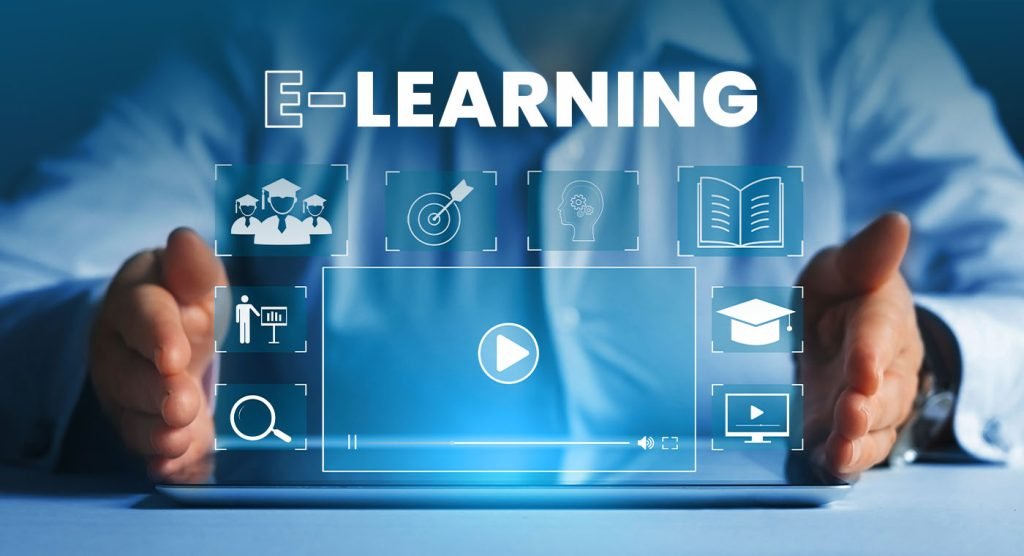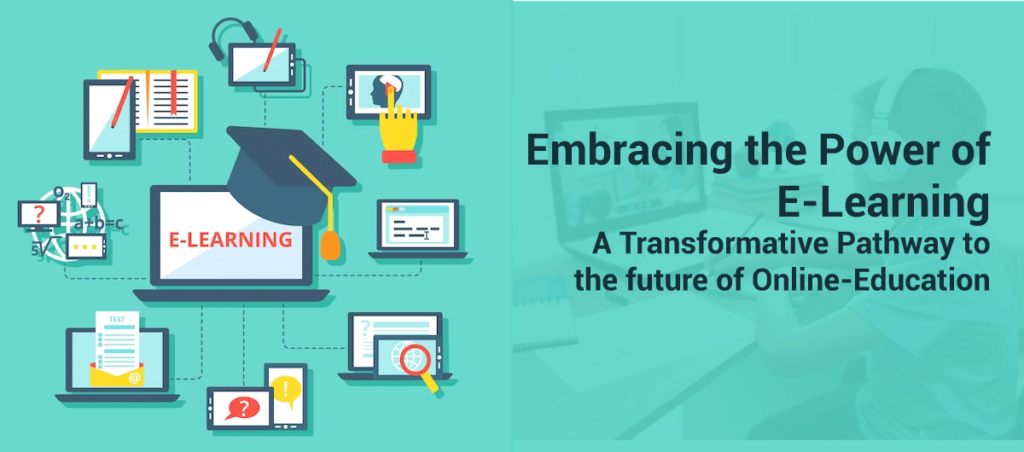Recent years have witnessed an explosive explosion of online learning technology and innovation, driving technological progress and shifting social needs. This article offers an in-depth exploration of its key trends, benefits, challenges, and future prospects, providing an exhaustive view into why it has become such an indispensable component of modern education and professional growth.
E-learning: A Historical Overview
The concept of e-learning dates back to the late 20th century with the dawn of the Internet; however, online education gained significant traction during the 2000s due to high-speed Internet and advances in digital technology that enabled interactive and accessible online learning platforms to emerge. By 2010, Massive Open Online Courses (MOOCs) emerged, providing free access to courses offered by top institutions worldwide.
In 2020, the COVID-19 pandemic proved a critical turning point for e-learning. When traditional classrooms closed due to illness or seasonal changes, educational institutions and businesses quickly adopted online learning solutions as an immediate means of continuity for learning and training programs. This shift proved the effectiveness of e-learning and increased its acceptance by mainstream education systems.
Technological Advancements Powering E-Learning in 2024
Numerous technological innovations have significantly enhanced the online learning experience, making it more engaging and effective. By 2024, several technologies will have emerged at the forefront of e-learning development:
Artificial Intelligence (AI) and Machine Learning (ML)
AI and ML are revolutionizing e-learning by offering customized learning experiences for individuals. These technologies analyze learner behaviours, preferences, and progress to tailor content for each learner’s needs. AI-powered chatbots offer real-time assistance, while adaptive learning platforms adjust task difficulty accordingly based on learner performance.
Virtual Reality (VR) and Augmented Reality (AR)
VR and AR technologies are revolutionizing online learning environments by creating immersive, interactive environments. These technologies are especially helpful for practical training, such as medical simulations, engineering design, or architectural design projects, where learners need hands-on practice to enhance retention and comprehension of skills learned safely in controlled settings.
Gamification
Gamification incorporates game elements into learning activities to engage learners and increase motivation. Leaderboards, badges, and reward systems make learning enjoyable and encourage continued participation and progress. Gamified e-learning platforms are particularly effective in corporate training and K -12 education.
Mobile Learning
With smartphones and tablets becoming ubiquitous, mobile learning has quickly become an indispensable aspect of e-learning. Mobile apps and responsive web designs enable learners to access content whenever and wherever they please – making learning more flexible and convenient. Microlearning formats lend themselves well to mobile learning environments by breaking content into bite-sized pieces for learners to quickly consume.
E-learning Benefits E-learning has many advantages that make it attractive to both educational institutions and businesses, including:
1. Accessibility and Inclusivity
E-learning transcends geographical barriers by offering education and training services worldwide. It serves diverse learning needs – including those of people with disabilities – by providing different formats like videos, audio, or interactive content – so everyone has equal chances to discover and develop new skills.
2. Flexibility and Convenience
E-learning offers learners many distinct advantages, one being its flexibility: students can access courses at their own pace and schedule, making balancing education with work or personal commitments much simpler. This feature is especially valuable to adult learners or professionals looking to upgrade or reskill.
3. Cost-Effectiveness
E-learning can be more cost-effective than traditional classroom education due to reduced expenses related to commuting, physical infrastructure and printed materials. Institutions and businesses can save on instructor fees by taking advantage of recorded lectures and automated assessments.
4. Scalability
E-learning platforms provide organizations with an effective solution for providing educational programs and corporate training to many learners simultaneously, making scaling easier for academic programs and corporate training initiatives that cover a global workforce. This scalability makes e-learning platforms ideal for training these workforces efficiently and consistently.
5. Improved Collaboration and Networking
Online learning platforms typically include social features to promote collaboration and networking among learners. Features like discussion forums, group projects, and peer reviews enable them to share knowledge, provide feedback, and form professional relationships with peers.
E-Learning Benefits and Challenges

Although e-learning presents numerous advantages, there are also certain challenges associated with it which need to be met to realize its full potential:
1. Digital Divide
One of the primary barriers to online learning is access issues; not all learners have access to high-speed internet or modern devices, particularly those living in rural and underserved communities. Reducing this digital gap is critical to providing equitable access to online education and training services.
2. Motivation and Self-Discipline
E-learning demands high levels of motivation and discipline from its participants, particularly as many learners may struggle without the structure of traditional classrooms to remain on task and complete courses successfully. Therefore, educators and trainers must devise effective strategies to engage and motivate their online learning journey.
3. Quality Assurance
Ensuring the quality and delivery of e-learning content are of utmost importance. Not all online courses are created equal, which increases the risk of learners encountering poorly designed or outdated material. Institutions and organizations should invest in developing high-quality, relevant, and up-to-date material to protect learners and ensure successful results.
4. Technological Issues
Technological difficulties, including software glitches, platform compatibility issues and cybersecurity threats, can disrupt an e-learning experience significantly. Reliable technical support and secure cyber measures must be implemented to overcome such hurdles effectively.
Future Trends of E-Learning E-learning’s future looks bright, with several trends shaping its development through 2024 and beyond:
1. Continuous Learning
As technology rapidly changes, continuous learning has become an indispensable skill. E-learning platforms have grown to facilitate this requirement by offering courses to keep skills current and adapt to new career opportunities. Micro-credentials and digital badges have also become popular for recognizing ongoing learning achievements.
2. Hybrid Learning Models
As more e-learning meets traditional classroom education, hybrid learning models have emerged. These innovative solutions combine the best aspects of both education forms, offering flexibility and face-to-face interactivity for an optimal experience. Hybrid learning models have proven particularly successful for higher education and professional training environments where combining theoretical with practical aspects is vital for success.
3. Global Collaboration
E-learning has become an ideal medium to foster global cooperation between learners, educators, and experts from around the globe. This cross-cultural exchange of ideas and knowledge enriches learning experiences while equipping people for a globalized workforce. International partnerships and collaborative projects are becoming more widespread within e-learning environments.
Data Analytics
Analytics play an increasingly vital role in improving e-learning. By analyzing learners’ data, educators and trainers can gain valuable insight into learners’ learning patterns, preferences, and outcomes that can help inform course design decisions, personalize the learning experience for individual students, or identify areas needing extra assistance for learners.
Environmental Education E-learning contributes to sustainability by minimizing its environmental footprint compared to traditional learning methods. It reduces physical infrastructure needs such as transportation and printed material costs, making education more eco-friendly overall.
Customization and Personalization in E-Learning
Modern e-learning requires customized and individualized experiences for every learner, unlike in traditional classroom settings where everyone receives the same course. Online learning platforms provide paths tailored to each learner’s needs, preferences, and pace. This approach increases engagement and improves learning outcomes. Advanced analytics and AI-driven insights assist educators with pinpointing learners’ strengths and weaknesses so they can provide targeted resources to address any identified weaknesses more efficiently; personalized learning experiences give learners more of an opportunity to focus on areas they require improvement, ultimately leading to more efficient and effective learning processes overall.
E-Learning for Soft Skills Development
While technical abilities remain vital in today’s workplace, developing soft skills is also becoming increasingly essential. E-learning platforms have begun integrating modules focusing on communication, leadership, teamwork and problem-solving into their courses to aid learners’ development of these crucial soft skills in virtual environments such as interactive simulations, role-playing scenarios, or real-world case studies. By providing soft skills training online, organizations can ensure their employees are well-rounded and ready for any challenges encountered on the job.
Higher Education Institutions
Are Exploiting E-Learning Higher education institutions have seen great gains from implementing e-learning into their curriculums. Universities and colleges offer more online courses and degree programs, making higher education accessible to a broader audience – especially non-traditional students such as working professionals and international students who may lack the flexibility for on-campus classes. Furthermore, online education allows institutions to reach a global audience, bringing students from diverse cultural and geographical backgrounds and enriching the educational experience for all involved.
Employer Solutions with E-Learning

Skill shortages remain a significant problem across many industries. E-learning provides an effective solution by offering tailored training programs designed to fill these skills gaps; industries such as IT, healthcare and manufacturing use this form of e-learning for specialized training that equips workers with essential abilities. Organizations can ensure their workforce remains up-to-date by constantly updating e-learning content to reflect emerging industry trends and technologies.
Enhancing Corporate Training
With E-Learning Corporate training has radically transformed since the advent of e-learning. Traditional in-person sessions have been replaced or supplemented by online modules employees can complete at leisure, saving time and resources while creating more consistent and scalable training across an organization. Engaging elements such as quizzes, video tutorials, and virtual workshops make the learning process even more engaging; tracking features are often available within these platforms so companies can monitor the progress and effectiveness of training programs.
E-Learning Instructors
While technology is essential in e-learning, instructors remain indispensable. Instructors provide crucial guidance, feedback, and support to learners and help design high-quality content that meets learning objectives. Instructors in an e-learning environment must also adapt to new teaching methods – such as online discussion facilitation using digital tools for assessment or creating engaging interactive content – which must all combine effectively to offer learners an unforgettable learning experience that effectively meets diverse learner needs.
Building Community in E-Learning
Community is essential to the success of any e-learning program. Online learning platforms often incorporate social features, like discussion forums, group projects, and peer reviews, that encourage interaction and collaboration among learners – these features create a supportive learning environment where students can freely exchange ideas, ask questions and give feedback – thus improving engagement and motivation, making the experience both enjoyable and effective as well as building valuable networking and collaboration skills that will benefit both academic and professional settings.
As e-learning becomes an increasingly integral component of our lives, certification and accreditation in online learning programs are quickly evolving. Employers and educational institutions increasingly recognize online courses and programs that meet certain quality and rigour standards; digital badges and micro credentials have become popular ways for online learners to demonstrate their abilities to potential employers, easily shared on professional networks like LinkedIn. Standardized accreditation processes will only strengthen this trend further.
E-learning’s Potential to Achieve Global Education Equity
E-learning holds enormous promise as an equalizer of global education equity. By providing quality education regardless of location or socioeconomic status, e-learning can reduce educational inequality between privileged and underprivileged learners – initiatives offering free or low-cost online courses such as MOOCs are instrumental in this regard – while partnerships between academic institutions, governments and non-profits can expand e-learning to underserved communities more widely – ultimately leading to more equitable global education systems overall. Ensuring inclusive e-learning systems is key to building more equitable global educational systems.
Conclusion
E-learning has quickly become an indispensable resource for education and professional development, providing unparalleled accessibility, flexibility, and scalability. Looking ahead to 2024, advanced technologies combined with innovative learning models will drive further progress in online learning. By addressing its challenges while taking full advantage of its benefits, we can create an inclusive, sustainable education system for all—the future of learning lies digitally!


I’m not sure exactly why but this web site is loading incredibly slow for me. Is anyone else having this problem or is it a problem on my end? I’ll check back later on and see if the problem still exists.
check your internet
I’m really impressed along with your writing skills as well as with the layout to your blog. Is this a paid theme or did you modify it your self? Either way keep up the excellent high quality writing, it’s rare to see a nice blog like this one today. !